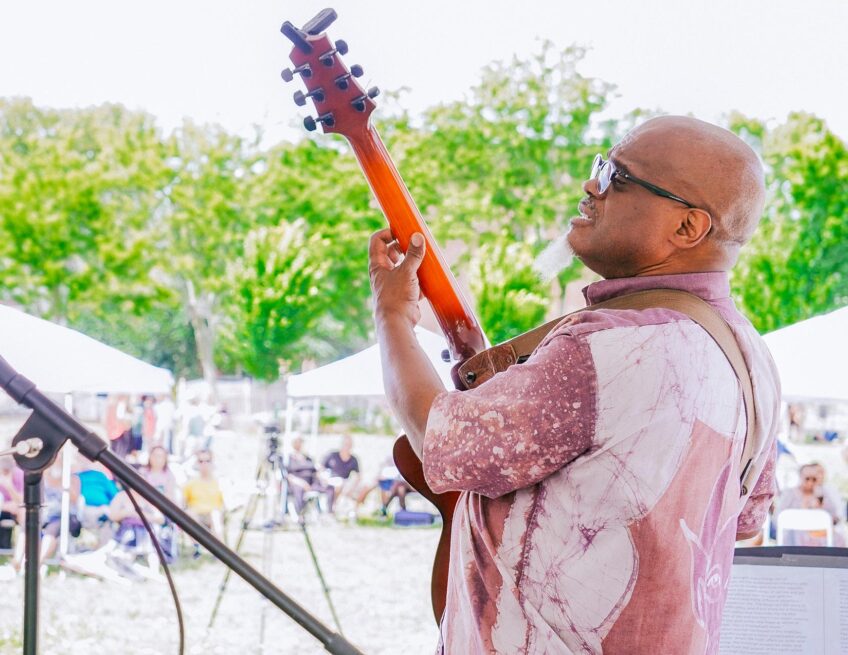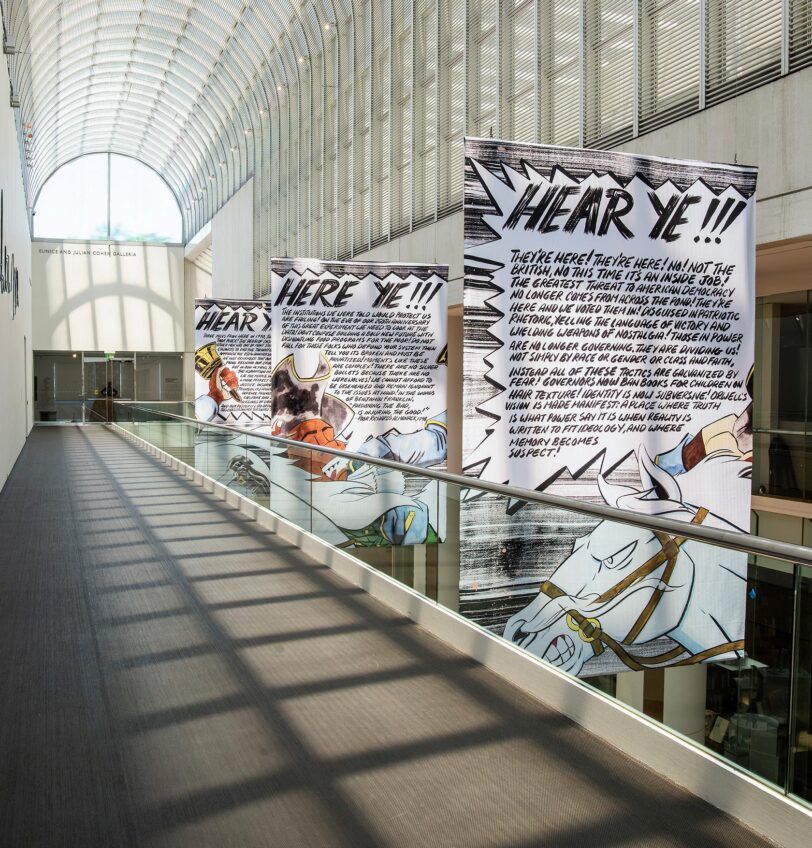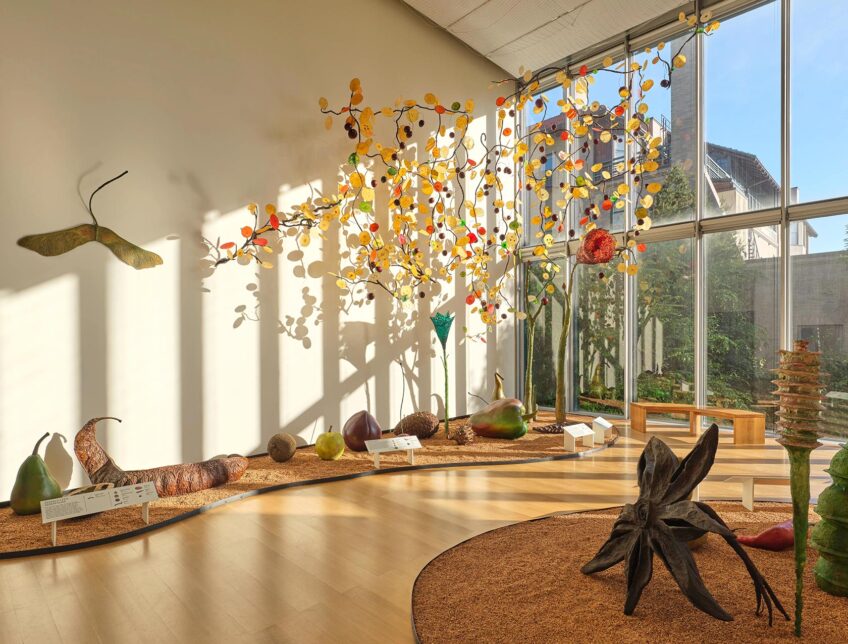Boston Arts Festival brings fine art and local music to the waterfront
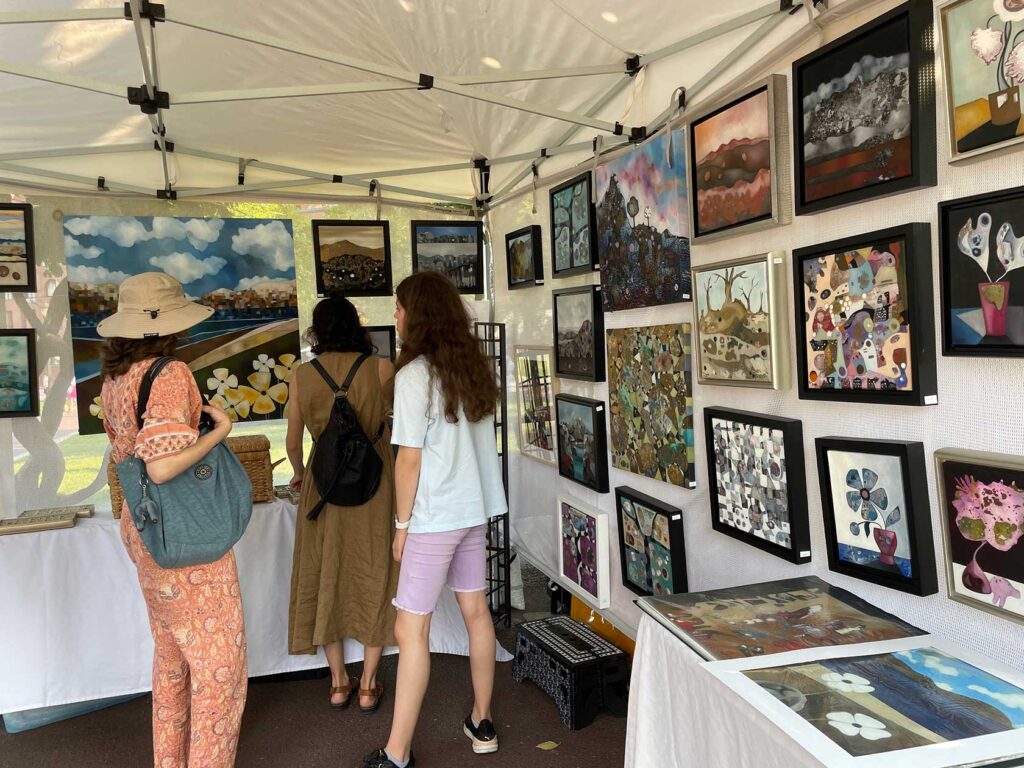
Beginning in 2003, Jen Matson showcased her photography at the Boston Arts Festival, a fine art event founded in 2003 by then-Mayor Thomas Menino. When the city decided to cancel the annual gathering in 2015 during Mayor Marty Walsh’s tenure, Matson stepped in to save it.
“I didn’t want the city to lose it. So I went into the arts office and I said, ‘Are you really canceling the Arts Fest?’ And they said, ‘Yep.’ And I said, ‘I’ll take it,’” Matson recalled. She already had experience running the Beacon Hill Art Walk, a tour through private spaces in the neighborhood, and South End Open Studios. So, the Boston Arts Festival was another notch on her belt.
Matson gave the festival a second life as its new director but kept its logistics consistent. Every year, dozens of Boston-based artists — painters, photographers, printmakers, collage-makers, potters, woodturners, glassblowers and jewelers — set up shop in the Christopher Columbus Waterfront Park the weekend after Labor Day. Boston-based musicians also perform on a stage throughout the day.
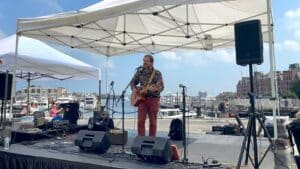
Musician Nick Zaino performs at the Boston Arts Festival, of which he is a longtime participant. PHOTO: THE BOSTON ARTS FESTIVAL
“We want to give local musicians a daytime stage in front of a large, wide audience, and … it’s important to me to expose all the neighborhoods of Boston to a variety of art and local music they wouldn’t otherwise hear,” Matson said.
Taking place on Sept. 7 and 8, this year’s festival will feature around 50 artists with booths set up under the trellis, as well as a dozen performers who will enliven the festival with a range of genres, from brass band to jazz to rock. Visitors can also enjoy freebies, including treats from Driscoll’s, the berry farming company.
“So there’s a little bit for everybody, and it’s a great spot to come hang out on the lawn with a picnic or a chair, your kids or your dog,” Matson said. “It’s family-friendly.”
Nick Zaino, a musician, podcaster and writer, has played just about every edition of the Boston Arts Festival since Matson took over. He even played the virtual installment of the festival during the pandemic, choosing to fashion a plastic shield for his harmonica to prevent it from spraying during the studio recording of his performances.
Zaino keeps going back to the Boston Arts Festival because he feels cared for as a musician, he said, adding that the organizers often share the artists’ work on social media. He especially appreciates the coexistence of visual art alongside music, he said.
“It’s good to sort of see these things mixed up and get out of your own very specific lane,” he said, “because it’s very easy these days, I think, to stay in one very specific lane of just what you like and just what you know.”
Zaino, who plays acoustic rock, folk and Americana music, plans to bring a mix of his original music and some covers to the stage at this year’s festival.
Every year, he looks forward to “seeing people enjoying what I’m playing, enjoying my own songs,” he said. Even when it’s raining, he always has fun. “It feels like a good community event to me,” he added.
For Matson, keeping the festival alive was a must. When she participated in it as an artist, it was one of her biggest sales events, she said, and she gained many repeat clients from it. Also important to her is that visitors can meet the artists while buying directly from them.
“It’s one of the few events in the city that focuses on fine art and not [a] craft fair or one of the open markets,” she said.
The festival’s location on the waterfront next to the Marriott Hotel and steps away from the North End places it in prime visibility for passersby. Depending on the weather, the Boston Arts Festival sees somewhere between 30,000 to 40,000 visitors each year, attracting a diverse mix of guests, Matson said.
About a third of them live in town, a third commute from the suburbs and a third are tourists, hailing from as far as Europe, she estimated, all there to get a taste of what Boston artists have to offer.
The artists in attendance are chosen by a jury committee that reviews applications and samples of recent work before selecting a couple of artists per category to ensure variety. Having run the festival for about a decade, Matson said she has learned how to tailor the artists and musicians to the audience’s preferences.
Behind the scenes, organizing the festival is nearly a one-person show. Matson manages the festival with help from an artist handling the social media and another who volunteers to manage the website. She said she’s always on the lookout for more help to guarantee the festival’s longevity.
To keep the festival free of charge, she relies on various avenues of funding, such as the fees artists pay to set up their booths and sell their artwork. Matson also uses money from promotional-sample vendors and occasionally receives grant support from the city.
She said she hopes to expand her team and her budget in the future, which would allow for a larger festival. If she secures additional funding, Matson said she would like to put on more ongoing free events in the summer for locals.
Matson wants the festival to be an opportunity for visitors to engage with the artists and the musicians they’re interested in, to learn about their crafts or songs, how they produced them and “what’s behind the pieces,” she said. “Fine art can often be inaccessible,” she added; the Boston Arts Festival brings it to the masses.
“We want them to have fun,” Matson said. “We want them to have an interesting art and music experience.”




